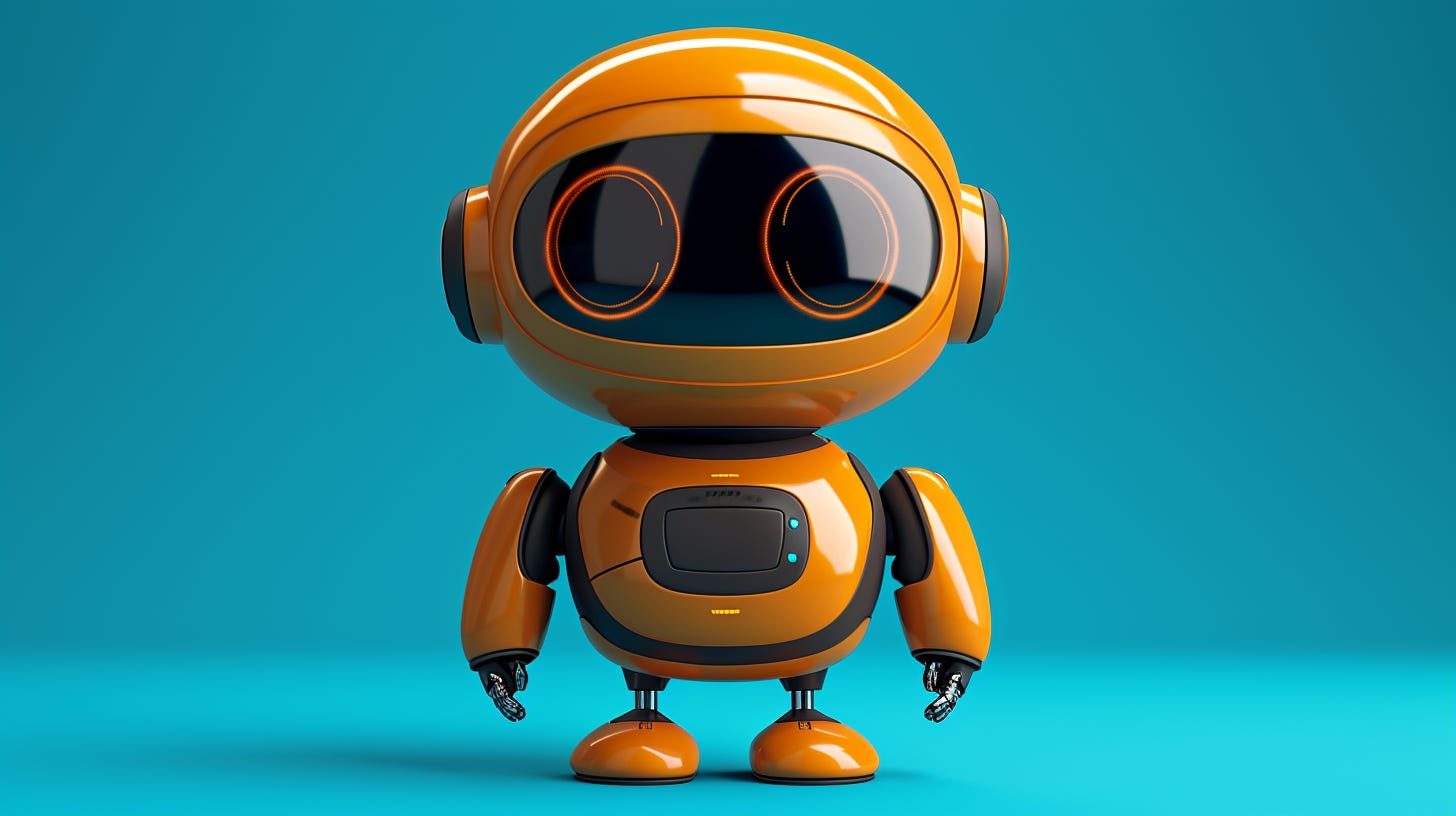OpenAI's GPT Store
I created a custom GPT for the social media platform Threads to offer via the GPT Store.

OpenAI is reportedly planning to open a GPT store to the public this week to allow third-party developers to share (and, apparently, sell) their custom GPTs.
Custom GPTs are customized chatbots built on top of OpenAI’s ChatGPT generative AI model.
I’ve been experimenting with OpenAI’s GPT Builder tool for a couple of months now. It is actually quite amazing what you’re capable of building with the tool.
The GPT Builder
Let’s start with the basics. You need a ChatGPT Pro subscription (as $20/month) in order to get access to the GPT Builder tool.
You don’t need any coding skills or even specialized technical knowledge to build a custom GPT because OpenAI abstracts that all away behind the familiar generative AI chatbot interface.
You just tell the GPT Builder what you want to create and the bot guides you through the process. You could literally have your bot up and running in 15 minutes if you’ve got a well-thought-out idea of what you want.
You give it specialized instructions for how you want it to behave. (I’ll share with you an example of one I created later in this post).
You can upload documents that serve as the bot’s customized knowledge base and source of truth. You can enable ChatGPT’s capabilities for web browsing, the DALL-E image generation tool, and the code interpreter to analyze data or code.
You can even incorporate third-party data or info via APIs, though this would obviously require some technical acumen.
The GPT Builder will create an icon that you can instruct it to customize using the DALL-E image builder.
And now, it appears, you’ll be able to share your custom GPTs with the world and even sell access to them, though OpenAI has yet to announce exactly how that will work.
Given the ease with you can build a custom GPT, I’m excited to see how people use this tool.
My GPTs
I’ve created several custom GPTs so far, a few of which have amounted to much.
The Failures
Media Analyst
This was way too ambitious for a first try.
I wanted this GPT to examine URLs that I provided of earned media coverage of a spokesperson/thought leader, company, or brand and give me a score for the prominence of coverage for that spokesperson, company or brand within the articles.
I did not thoroughly think through what kind of instruction the GPT would need to be successful.
Or maybe this is just something that is beyond the reach of OpenAI’s GPT Builder.
News Digestor
This GPT was intended to go out and find all the news coverage of a particular story and give me a digest of that story by listing headlines, news source, reporter(s), a link, and a summary of that article’s coverage.
Basically, I wanted to streamline the news links I used to include at the bottom of my posts because that part of this newsletter took so much time and effort to compile.
But the bot only gave me a lengthy summary of the coverage without differentiating between sources or even citing sources.
This was one of my first attempts, so I may go back to it and try to get it to work properly now that I’ve had some experience building others.
The Successes
Video SEO Assistant
This GPT is fairly simple and straightforward, which is probably why it works fairly well.
The GPT will take a text transcript from a video and make recommendations for optimizing that video on YouTube, based on the content of the transcript.
Schema JSON-LD Code Generator
This one has required a lot of iterations and some bumps along the road but it works pretty well.
I wanted to streamline the process of creating JSON-LD code for schema to implement on client websites.
This has been a standard tactic for search engine optimization for several years now but I believe it will gain prominence as adoption of generative AI bots like ChatGPT enjoy widespread public adoption.
What I wanted was a system where I could have interns collect the data needed for a given schema (for an organization, a person, a video, or a book, for example) and compile that into a spreadsheet.
Then I could feed that spreadsheet to the GPT and it would spit out valid JSON-LD code they could then paste into a given web page.
It definitely saves time.
Personality Insights
This is the one that really blew me away.
I won’t share the details with you about how I created this because frankly I don’t want any competition.
The short description, though, is this: You can describe a type of person you want to reach—a customer persona, for example—or you can upload a dataset about that audience, and the bot will give you a detailed personality profile of that type of person.
I have tested it with some audiences I have researched extensively and I was absolutely amazed at the results.
It was one of those OMFG! moments.
Threadster
Lastly, this is a pretty simple but utilitarian GPT.
Threads has been my replacement for Twitter and the social network I’ve become most active on. It’s where I share daily articles I’m reading and engage with other users in discussions about the Vikings, marketing, tech, AI, and politics, among other things.
If you’re interested, here are two posts I wrote about the platform:
So I thought I’d create a bot to help me promote my newsletter more by taking passages of text that I could easily turn into a chained post on Threads.
And that’s what it does. You give the bot some text and it breaks it into chunks of 500 character or fewer segments suitable for creating a chained post on the Threads.
It will break up the user’s text verbatim (without breaking any text mid-sentence) or it will offer to rewrite the text. It will add emojis and hashtags appropriately, given the context of the text.
Here’s a thread I shared on Threads demonstrating the output of the bot.
You can try it out here but you’ll need the ChatGPT Pro version to get access.
I’d love to hear what you think and get any feedback, positive or negative. Email me here.
Custom GPT’s One Missing Element
The one glaring element that is missing from OpenAI’s GPT Builder is the ability to give your custom GPT a voice and give the user the ability to chat with it via voice activation.
I hope that will be added fairly soon. Here’s my comparison of the voice-activated chatbots:
Conversational AI Chatbots
I have been fascinated with the AI chatbots that provide a voice activation interface and have been experimenting with this feature since it was released with ChatGPT in September. Voice activ…
A Profound Shift
The ability for anyone who has an idea and the ability to articulate it in text to create a generative AI bot represents a pretty profound shift in AI development.
It promises to unleash the creativity of a vast audience for whom programming is an utterly ailen concept.
I don’t think we have a clue the kinds of things people will create.
Recommendations
Television
Bodies is a limited series on Netflix that is a blend of a whodunit, detective, and time travel story. The basic premise that detectives investigate the same exact murder in the years 1890, 1941, 2023, and 2053.
Very smart writing and excellent acting accompany this amazing storyline.
Music Monday
Good Ol’ Shoe by Edgar Winter is one of my all-time favorite blues songs. I first discovered the song when I heard Willie Nelson cover it for the movie Wag The Dog.


